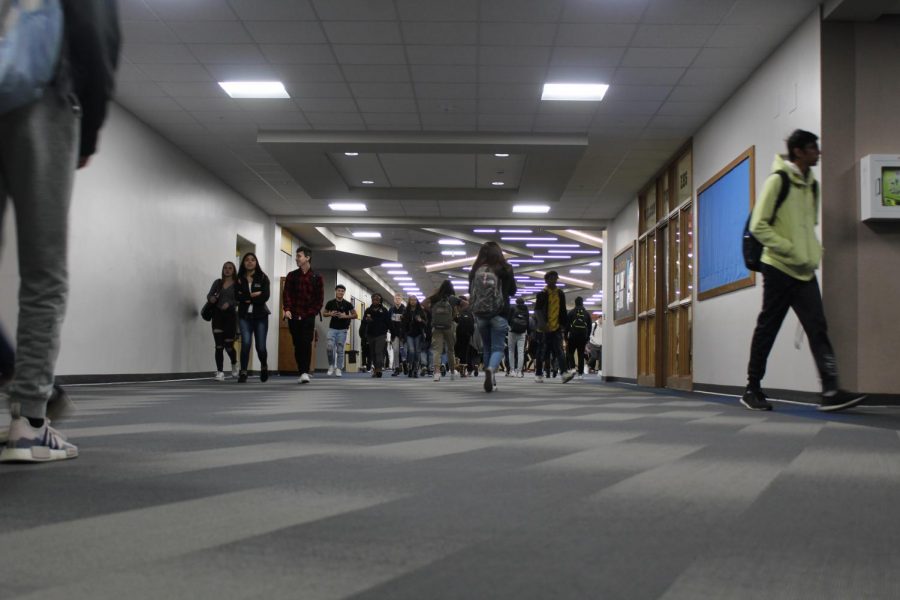School Fights: Why are they happening and what is our staff doing about them?
Students walk through the Student Center at Elkhart Memorial during a passing period on Wednesday, Jan. 29.
January 31, 2020
The hallways were full of commotion when students returned from winter break and this time it wasn’t because of construction–it was because of fights. With more than one physical altercation happening in the first week, students and staff began to wonder, “What’s with all the fighting?”
What causes school fights, especially at Memorial?
According to School Resource Officer (SRO) Bobby Presswood, student conflicts stem mostly from comments made on social media. When small tiffs are publicly announced to peers, feelings and emotions become amplified. Those emotions can quickly escalate into a physical fight when students return to school.
As the SRO, Presswood is one of the first people contacted when a fight breaks out. He sees it as his job to protect the students and staff at Memorial and to investigate the motivates behind the altercation.
“Social media, most of our student led fights are caused by social media,” Officer Presswood said.
In the age we live in, social media causes all sorts of distractions, but according to Officer Presswood, the fear of “being humiliated in front of your peers” is the main reason that social media causes student confrontation.
The consequences students don’t realize
Students who fight may not realize the severity of the potential consequences.
A serious injury can lead to handcuffs, which can lead to a student going to the detention center and criminal charges being filed. With court dates and court fees, the results could feel neverending.
But instead of fighting in school, Presswood says there are other, more rational options:
“Rather than fighting, find a different way to cope with issues. Bring it to an administrator or me and we can set up a meeting in my office,” Officer Presswood said.
So, what are teachers doing to prevent and respond to fights?
From a teacher’s point of view, it might be scary for them to get involved in the middle of a fight, and if they are injured by a student during an altercation, they have the right to press charges. This could make for a messy situation.
According to Officer Presswood, there is no expectation that teachers physically intervene to break up a fight, but they are expected to seek help immediately in an effort to defuse the conflict.
Tenth grade English teacher, Mike Henderson, believes that positive relationships between teachers and students is key to defusing a fight.
“Have a good relationship with kids, so once a fight does begin to stir, you can de-escalate it,” Henderson said.
But, what about parents? What can they do to help improve the school environment?
“If that was my kid, I’d expect someone to do something about it. Parents have to set an expectation in this setting. It’s not ideal for teachers to teach their kids [students] how to behave,” Henderson said.
High parental expectations for behavior and positive teacher and student relationships can prevent and quickly de-escalate a conflict. These close relationships can make or break the outcome of a physical fight.
“I just ask if a fight happens you [staff] call extension 5934, give Leticia details about the situation so she can communicate to the admin or police over the radio so we can respond accordingly,” Officer Presswood said.








